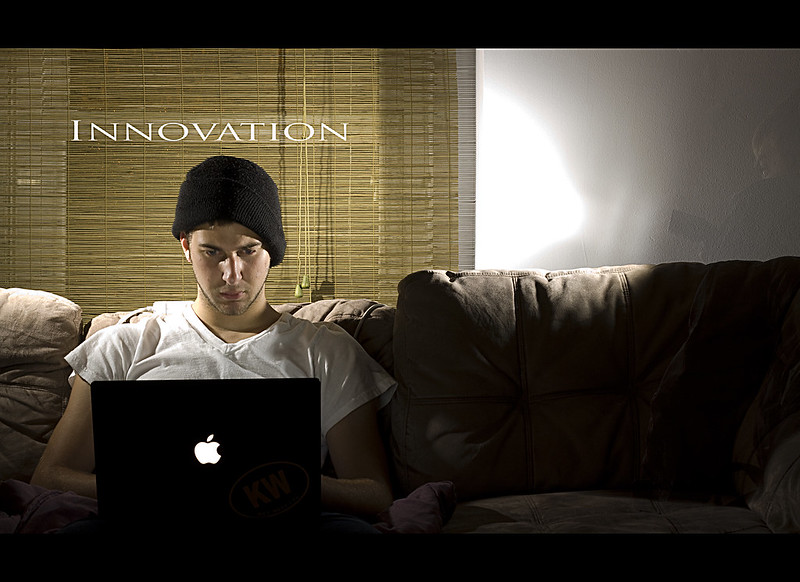The pandemic has proven that remote work can increase office employee productivity, morale, and employee-work life integration while reducing carbon emissions. But what about innovation workers? Do they have to be face-to-face every day to innovate? The answer from my experience and research during the past decade is a resounding “No.” In fact, a hybrid model will accelerate innovation.
When I implemented a remote work environment for Medtronic businesses in Santa Rosa, CA, in 2012, the business driver was avoiding the considerable cost of converting obsolete factory space to office space, required with the hiring of more than 100 research and development employees. The executives asked me, “Can we hire 100 employees and not give them an office?” The answer I gave them was ‘yes, but you will need to learn to manage teams differently.’
Managing teams differently requires leaders to be more specific about delineating strategies and to set clear goals, milestones, and operating norms that will help the teams communicate, collaborate, and keep esprit de corps virtually. We ended up in Santa Rosa with 45 percent of the workforce working remotely three to four days a week. These remote employees were ones who did their work through the computer and communicated by text, email, phone, and videoconferencing. Employees whose work was tied to manufacturing and innovation labs had to come into work every day. Most of our teams were a hybrid model, meaning some team members worked in the office every day; others worked at home three to four days a week.
It was extremely successful. We saw a 22 percent improvement in employee productivity and $2 million a year in real estate costs savings. The morale of our employees improved. We were able to reduce turnover and enhance our ability to recruit diverse talent.
We also learned that requiring innovation workers to come into the office every day was not necessary.
The common wisdom at the time we started was that they need to be face-to-face five days a week to be successful.. Many leaders still believe this principal to be true today—especially for employees who work in labs with sophisticated test and analysis equipment. But after the first year, the operating norms for the innovation teams changed. I noticed that workers on the innovation teams were allowed to work from home–away from the office din–to review data, write reports, and clear their minds to obtain new perspectives. One R&D director told me that his innovation workers were more productive doing their “head’s down work” at home rather than in the office. If he needed them, he knew how to find them quickly due to their operating norms.
It worked. Our experience is now backed up by research showing that remote work has a positive effect on product development performance by enabling knowledge sharing, cross-functional cooperation, and inter-organizational involvement. This new paradigm improves the speed and quality of product development, provided that face-to-face contact is not completely replaced by virtual communication.
During COVID19 researchers in many labs come into the office every day to work with their lab equipment, following standard COVID19 safety protocols. As we advance during the pandemic and afterward, this need not be the case. Innovation works better with a mix of in-office and remote work.
Critical to our success was the training we provided to our managers.
Many executives who have implemented remote working in March due to COVID-19 still have not set up operating norms. It is difficult to optimized hybrid teams without operating norms. We required each team to do the following:
- Define which meetings are be face-to-face or virtual. Most teams had their staff meetings, one-on-one meetings, performance reviews and coaching meetings face-to-face. Critical meetings, often a day-long, to review common data, and make decisions were also usually face-to-face.
- Specify where to find files on line. Each team had to be clear about where to find policies, procedures, reports, and whatever else was required to do their work remotely. They also were told how to escalate technical problems in finding this data.
- Establish reasonable response times. Teams set up a protocols for when to answer a question within five minutes, an hour, or by day’s end. Usually, a phone call meant answer it now, a text by an hour, and an email by end of the day.
- Help virtual members stay involved in the hallway chatter. Almost every team had a combination of in-office and remote workers. Keeping the remote workers up on the hallway conversations, often by calling them and conferencing them in on the discussion immediately became the habit.
- Prevent burnout. When employees begin to work remotely, they often work more time than when in the office, using half of their saved commute time to work and working more time in the evening. To prevent burnout, we had team leaders meet with each employee to set time limits for working based on the employees and the team’s needs.
- Define decision making. The decision-making method used in this culture was that the team would make decisions after evaluating the pros and cons of their analysis and a thorough discussion. If the team could not decide, the leader would decide. What was most important was assuring all had an opportunity to voice their opinions, and the discussion was not dominated by one or two people and or by the in-office workers.
Working remotely or in the office is usually not an all or none answer. If your innovation has faltered during the pandemic, try implementing a hybrid working model.
Victor Assad is the CEO of Victor Assad Strategic Human Resources Consulting, managing partner of InnovationOne, and Sales Advisor to MeBeBot. He works with companies to transform HR, implement remote work, recruit executives, and develop extraordinary leaders, teams, and innovation cultures. He is the author of the highly acclaimed book, Hack Recruiting: the Best of Empirical Research, Method and Process, and Digitization.

